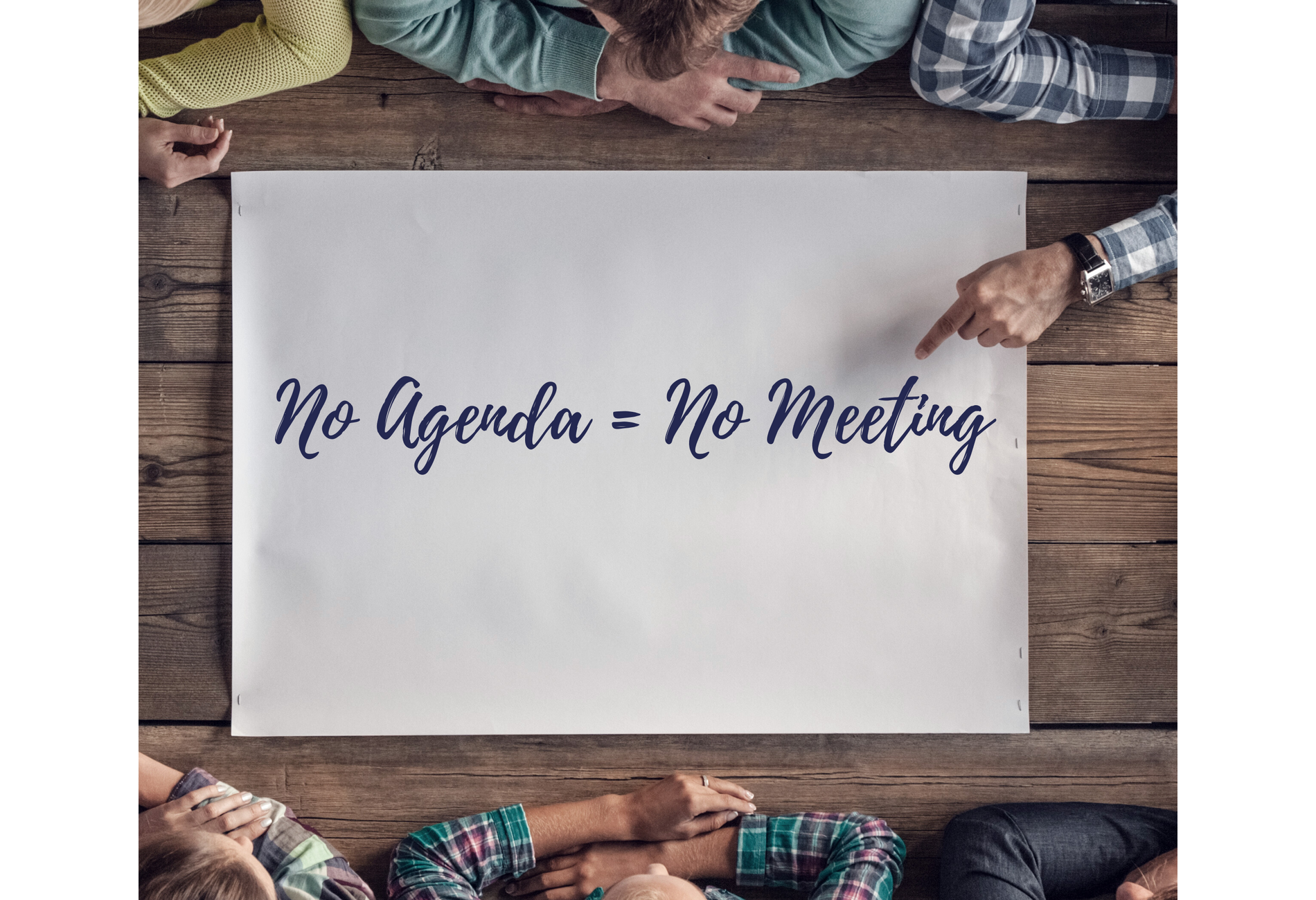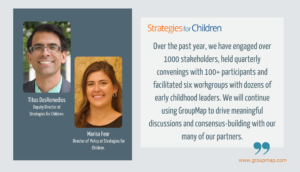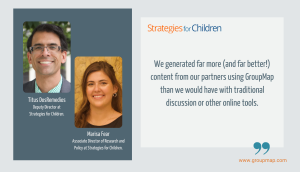
Your inbox is full to overflowing.
You only have the afternoon to meet not one, but two important deadlines.
You don’t have a second to spare.
Yet you are sitting in a room with twelve other people listening to two colleagues discuss an issue with a supplier you don’t know.
Why?
You’re in a bad meeting.
Unfortunately, we’ve all been there. We’ve all sat through seemingly purposeless, directionless meetings that just won’t end. They feel like a frustrating waste of time.
What you need is something that helps keep things relevant, focuses conversations, and maybe even determines if a meeting is even needed.
What you need is an agenda.
What is a Meeting Agenda?
An agenda is an incredibly valuable tool that provides a framework for a meeting.
In very broad terms, agendas typically include –
- where and when a meeting will take place
- who will attend
- what will be covered and by whom
The great thing about them is that if used correctly, agendas can boost productivity and, most importantly, save time.
How Agendas Help Plan a Meeting
Compiling an agenda is like pulling together a shopping list so that you only seek out what’s included on the list and don’t waste time meandering down shopping aisles looking at things you don’t need.
Call for Agenda Items
Calling for agenda items means asking people if they have things they wish to have included in the meeting.
It’s a good way of ensuring participants don’t bring things up unexpectedly, so the time allocated to the meeting is appropriate. It also makes people feel valued and included in the meeting process itself.
Agenda items can include –
- any completed actions that were to be undertaken as a result of the previous meeting
- draft resolutions or decisions (with supporting detail) you hope the meeting to consider
- documents you wish to share
- a report or summary to offer an update
- items participants are to bring to the meeting
As a general rule, the more people engage with this step, the more likely the meeting will be effective.
Drafting the Agenda
Drafting the agenda means putting all of the items that have been gathered into a logical order. That order is very much informed by the type of meeting that will be taking place.
Formal meetings such as those mandated by the governance of an organisation (board meetings, committees meetings, special task forces, working groups) are likely to have specific topics they are to cover, with discussions and decisions recorded in a particular way.
Collaborative meetings such as decision making meetings, problem solving meetings, team building meetings, and brainstorming meetings, will follow an order that supports its purpose.
In a very broad sense, agendas are usually set out in the following way –
- The name of the group in attendance
- The time, date and place of the meeting
- The people attending the meeting (noting those who aren’t able to attend)
- (if relevant) the notes or minutes of the previous meeting
- (if relevant) the actions that were to be taken following the previous meeting
- The items that are to be discussed
- (if time permits) items that the agenda didn’t include
- The time date and place for the next meeting
Ideally, each of the above should be aligned with an allocation of time; the total of those times adding up to the length of the meeting. This means that people understand how much time they have to present their item and can prepare accordingly. It also means that during the meeting itself, the facilitator can, without causing offence, ask presenters to wrap up if they are running overtime.
The agenda can also be used to ensure the right people are in the room at the right time. If someone with specific expertise is needed to support a particular item, they need not sit through the entire meeting waiting for that item to be addressed. Rather, that item can be addressed first and that expert can then leave the meeting or they can be allocated a time to join the meeting.
It’s at this stage, if there’s nothing of substance to cover, or if there is no progress to report, the decision can be made not to hold the meeting at all. Not only does this mean that participants can make plans to better use that allocated time, it is a demonstration of professional courtesy that will be remembered.
Circulating the Agenda
Circulating the agenda means sharing it with those who will be attending the meeting. Any information, reports or documents that were contributed when items were called for should also be shared.
This step has the potential to save an incredible amount of time during the meeting itself –
- reports and documents can be read beforehand
- resolutions have already been drafted
- concerns or questions can be clarified in advance
- errors or omissions can be identified and rectified
Circulating the agenda in advance will also ensure participants have a shared understanding as to what is to be covered during the meeting, and by whom. They have the opportunity to assess if the meeting is a priority and can even negotiate their absence if need be.
In short, people have been forewarned as to what to expect in the meeting, this will limit confusion and save time.
How Agendas Help Facilitate a Meeting
The meeting is when an agenda truly proves its value.
Using an agenda, a facilitator can help participants navigate through a meeting, ensuring everyone stays on track, starting on time and (importantly) ending on time.
The agenda effectively gives the facilitator permission to shut down conversations that are not on topic or that are running over time; ensuring that which is discussed during the meeting is focused and purposeful.
If important conversations become bogged down, they can be put on hold to be discussed at the end of the meeting (if there is time) or at a completely separate meeting.
If all of the items are covered sooner than expected, the meeting can end. Those who have other commitments can leave without causing offense, those who wish to stay can do so. People are highly appreciative of an efficiently run meeting.
How Agendas Help Document a Meeting
More often than not, notes of a meeting (sometimes called minutes) are to be recorded and kept. When a detailed agenda is prepared, not only has key information already been captured but a framework to structure meeting notes has been built.
Using the agenda as a guide, the person taking notes during a meeting (sometimes called a scribe or secretary), is attuned to the purpose of each item being discussed. They can therefore better focus on recording key points rather than being distracted by conversational minutia.
How Agendas Increase Productivity
Agendas increase productivity in three key ways –
- they inform schedules
- they timebox discussions
- they focus conversations and effort
Agendas allow people to get organised. Participants can ensure their schedule aligns to that of the meeting, they can prepare for the topics that will be covered and safely ignore the rest.
Agendas minimize the impact of Parkinson’s Law; that is, work (or in the case of meetings, discussion) expands to fill the time allotted for its completion. At the same time, they ensure discussions are focused, and therefore more likely to deliver positive outcomes.
Finally, agendas facilitate the documentation and tracking of action items ensuring things aren’t accidentally forgotten or overlooked.
Start Planning your Agenda Today
An agenda is an easy way of bringing considerable value to your meetings.
If you are looking for a tool to help you compile your agenda and facilitate your meetings, GroupMap is here for you.
GroupMap is an online brainstorming, group decision-making, and meeting facilitation tool that dramatically improves the output of collaborative team activities.
Find out how GroupMap can help.



